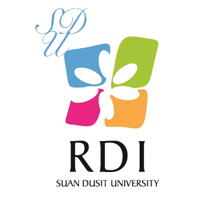การเข้าถึงพื้นที่สีเขียวนันทนาการในเขตเทศบาลนครหาดใหญ่ จังหวัดสงขลา
Keywords:
พื้นที่สีเขียวนันทนาการ, การเข้าถึง, เทศบาลนครหาดใหญ่Abstract
บทคัดย่อ
พื้นที่สีเขียวนันทนาการมีความสำคัญต่อคุณภาพชีวิตของคนเมือง ประชาชนสามารถใช้ประโยชน์เพื่อการพักผอนหยอนใจ ออกกำลังกาย พบปะพูดคุย และนันทนาการต่าง ๆ การศึกษาครั้งนี้มีวัตถุประสงค์เพื่อศึกษาการกระจายของพื้นที่สีเขียวนันทนาการ และศึกษาการเข้าถึงพื้นที่สีเขียวนันทนาการของชุมชน โดยใช้เทคโนโลยีภูมิสารสนเทศ ผลการศึกษาการกระจายของพื้นที่สีเขียวนันทนาการโดยการวิเคราะห์ความสัมพันธ์เชิงพื้นที่ (Auto Correlation, Moran’s Index) พบว่า พื้นที่สีเขียวนันทนาการแต่ละแห่งไม่มีความสัมพันธ์เชิงพื้นที่ หรือมีรูปแบบการกระจายไม่แตกต่างจากการกระจายแบบอิสระ ส่วนการวิเคราะห์เข้าถึงพื้นที่สีเขียวนันทนาการโดยวิธีวิเคราะห์แนวกันชน (Buffer Analysis) ภายในรัศมีการให้บริการพื้นที่สีเขียวนันทนาการในระยะทาง 300 เมตร 500 เมตร และ 1,000 เมตร พบว่ามีพื้นที่ให้บริการคิดเป็นพื้นที่ 1,781,636 ตารางเมตร, 2,253,626 ตารางเมตร และ 6,301,349 ตารางเมตร ตามลำดับ ส่วนชุมชนที่เข้าถึงพื้นที่สีเขียวนันทนาการภายในรัศมีที่กำหนดมีจำนวน 22, 34 และ72 ชุมชน ตามลำดับ โดยชุมชนที่สามารถเข้าถึงพื้นที่สีเขียวนันทนาการภายในรัศมี 1,000 เมตร มีเพียงร้อยละ 59.50 ดังนั้นหน่วยงานส่วนท้องถิ่นควรมีการสนับสนุนและผลักดันให้มีการเพิ่มพื้นที่สีเขียวนันทนาการให้มากขึ้นเพื่อให้ชุมชนได้เข้าใช้บริการได้อย่างทั่วถึง
คำสำคัญ : พื้นที่สีเขียวนันทนาการ, การเข้าถึง, เทศบาลนครหาดใหญ่
Abstract
Urban green space is crucially important to the quality of urban life. This open space provides values to urban residents in number of ways, such as recreational opportunities, aesthetic experiences, and health benefits. The main objectives of this study were to classify the amount and distribution and to evaluate accessibility of recreational green spaces. Results of analyses of distribution of recreational green space using Auto Correlation (Moran’ s Index) showed that each recreational green space was not correlated to spatial area. Meanwhile, the accessibility of recreational green space employing buffer analysis demonstrated that there were service areas within radius of 300, 500 and 1,000 meters. Based on this result, service areas were 1,781,636 , 2,253,626 and 6,301,349 square meters respectively. In addition, it also reported that there were 22, 34 and 72 communities respectively which were able to access into these recreational green space. There are 59.50 percentages of the communities has access to the recreational area within the specified radius of 1,000 meters. The local government should support and increase the recreational green space which available and reachable to the communities.
Keywords : recreational green space, accessibility, Hatyai Municipality








